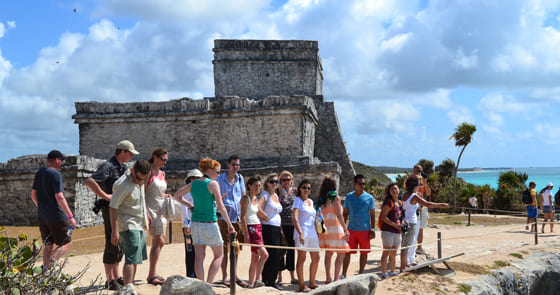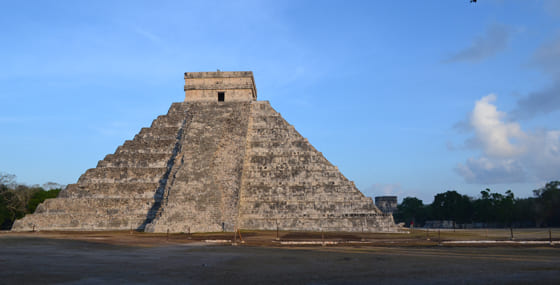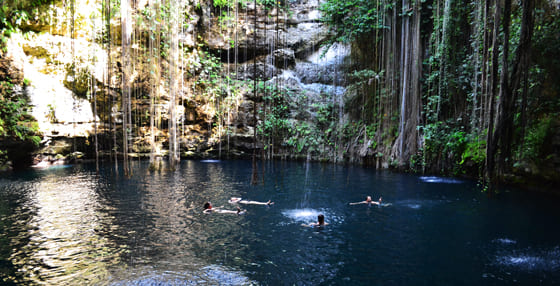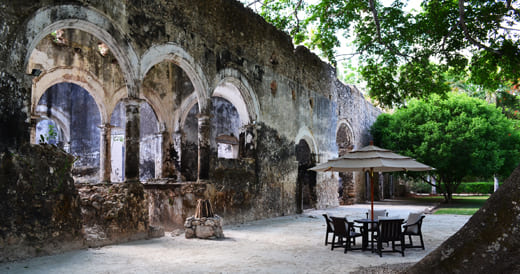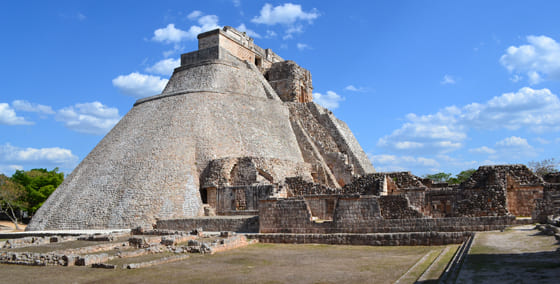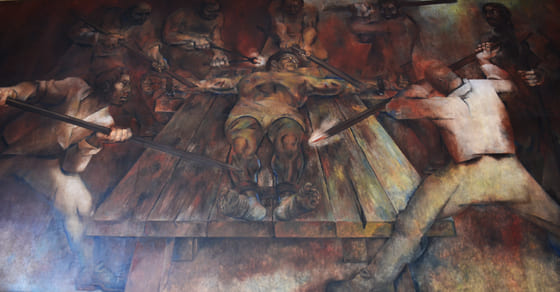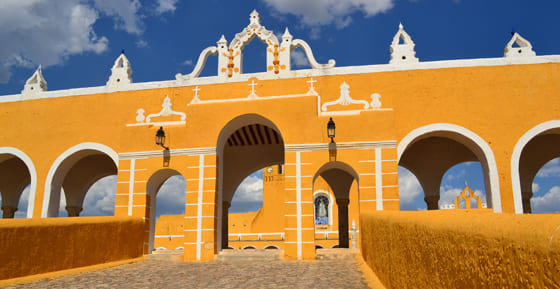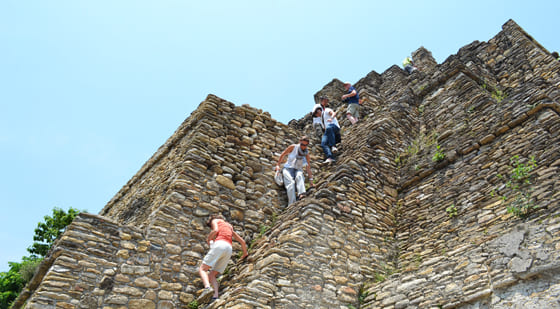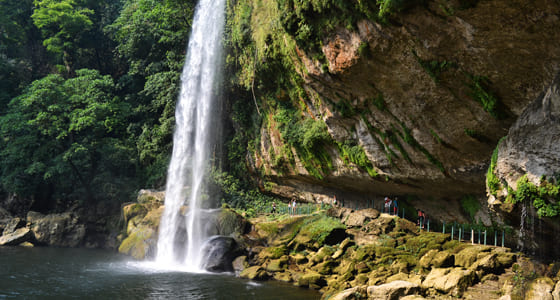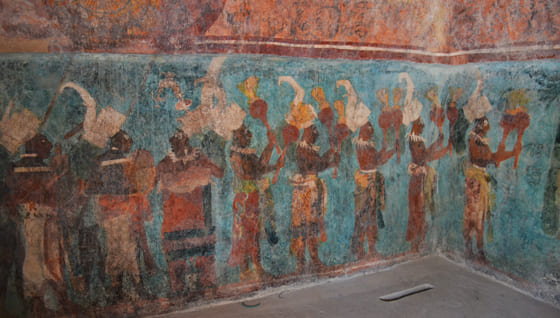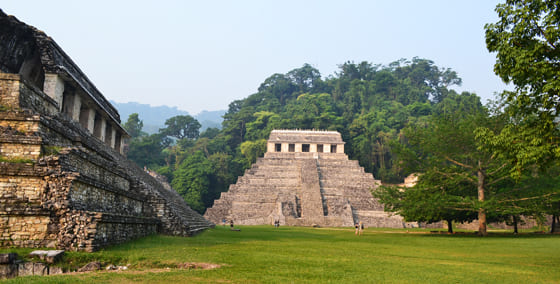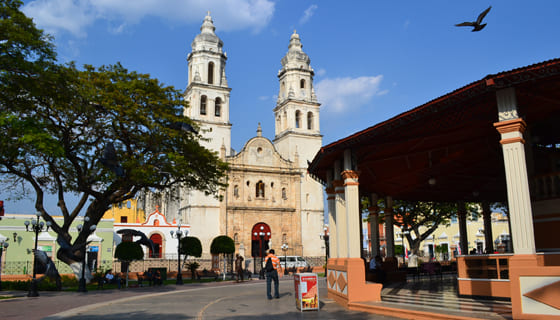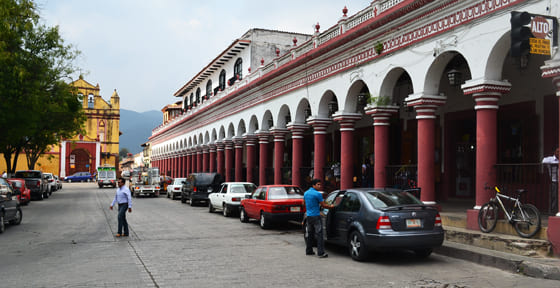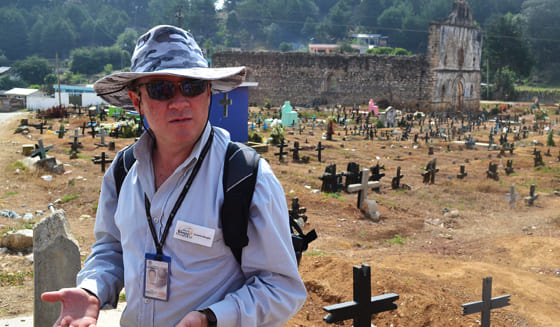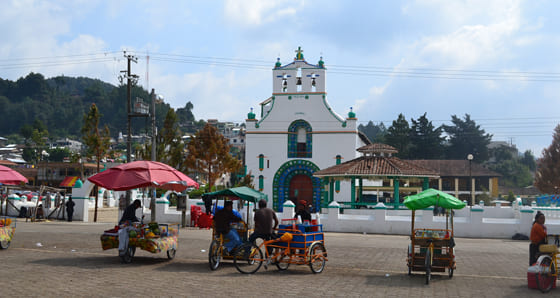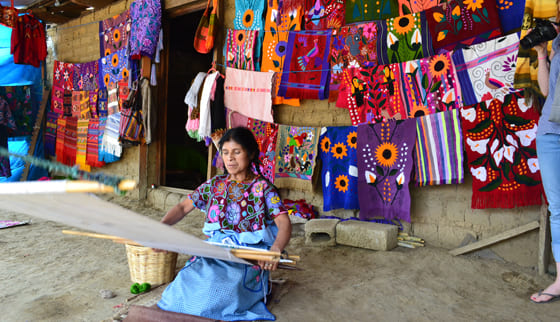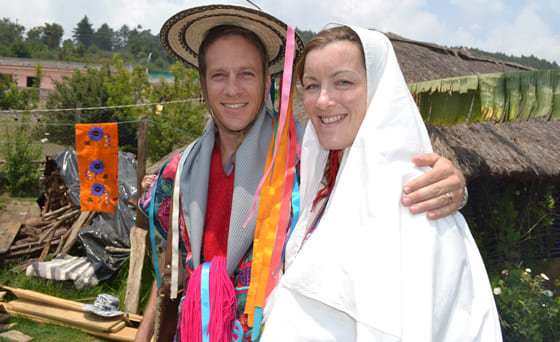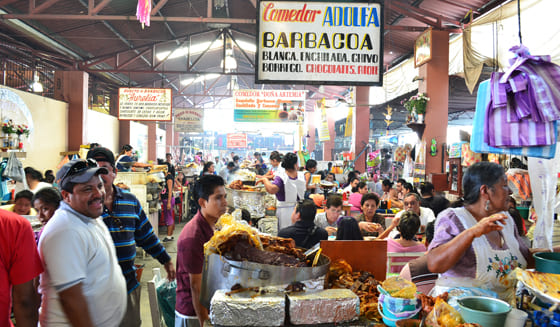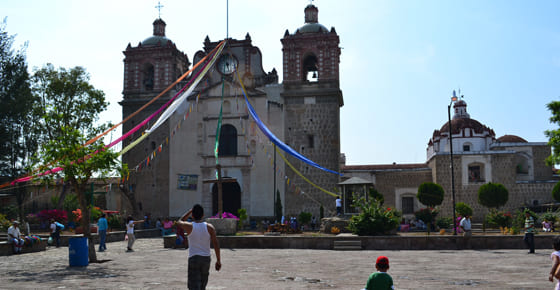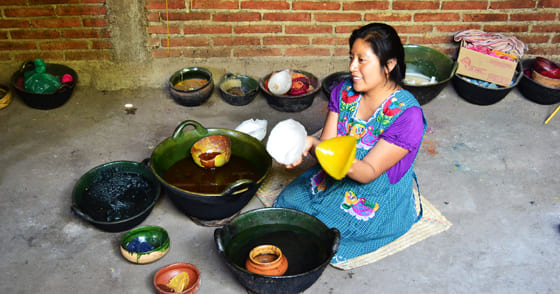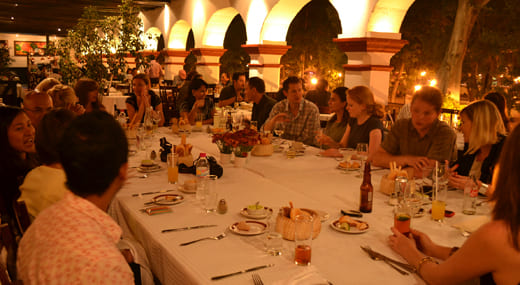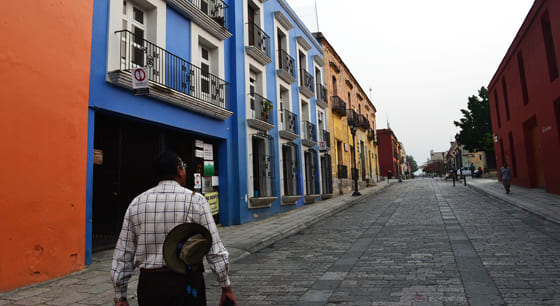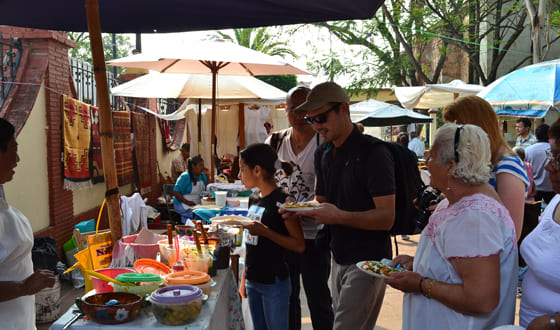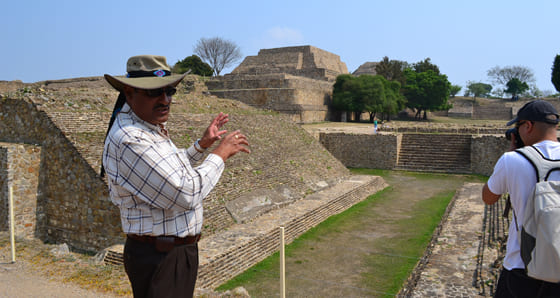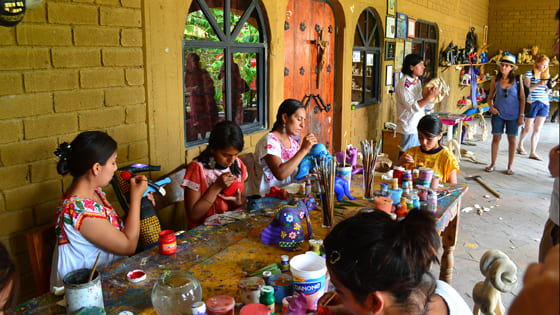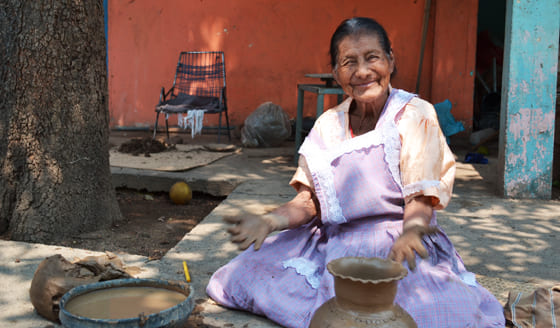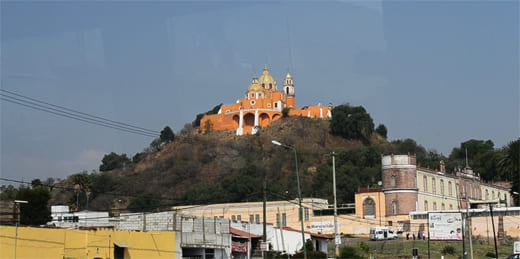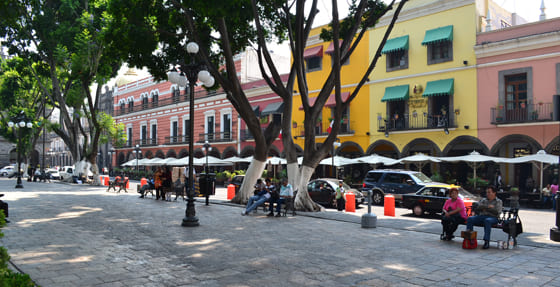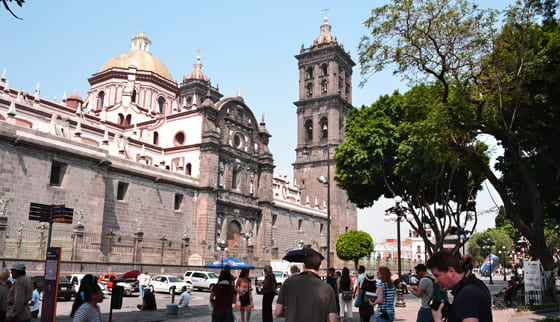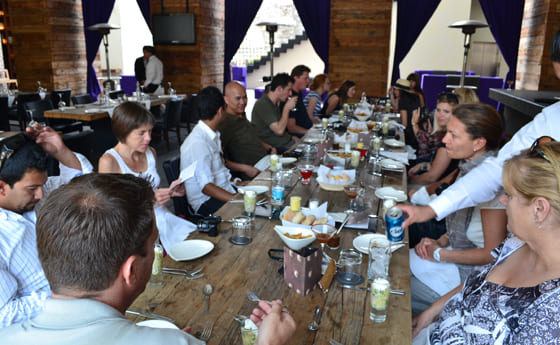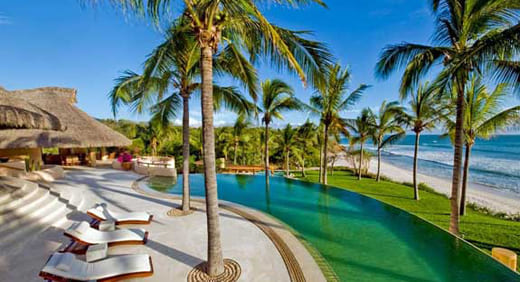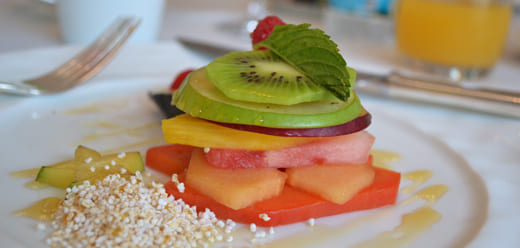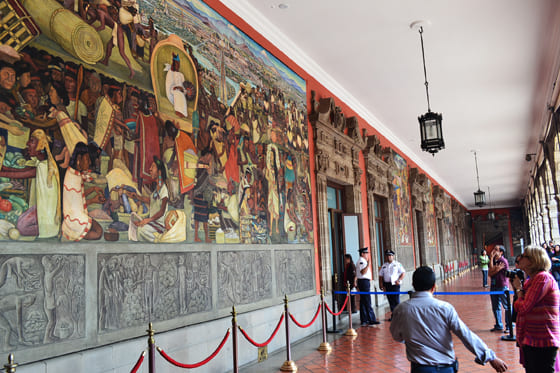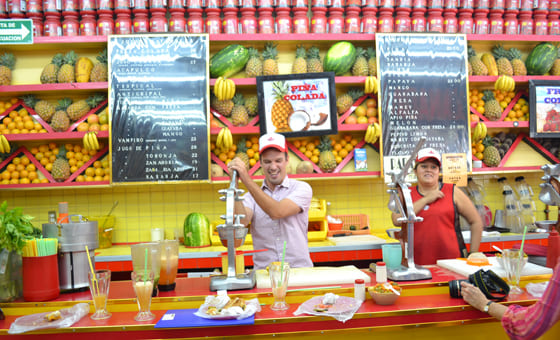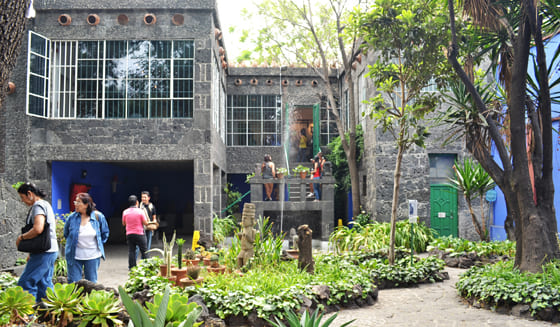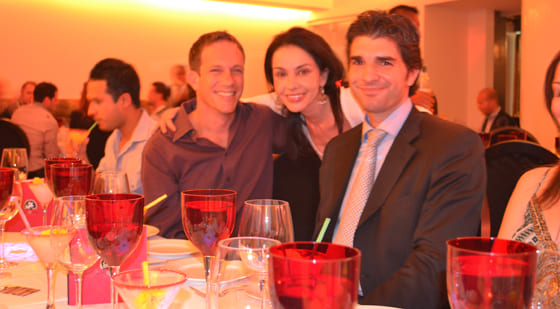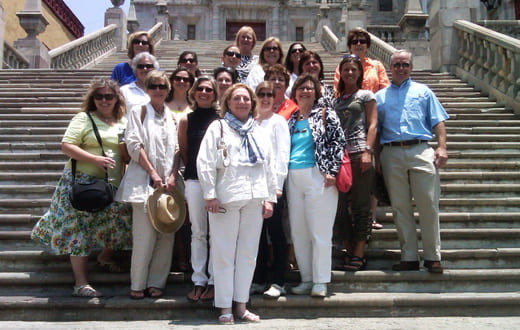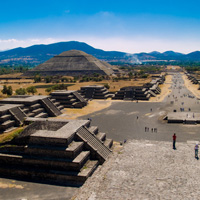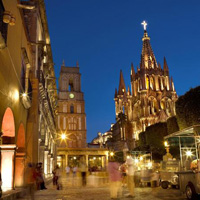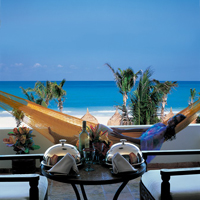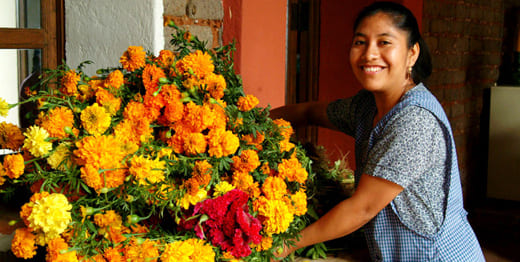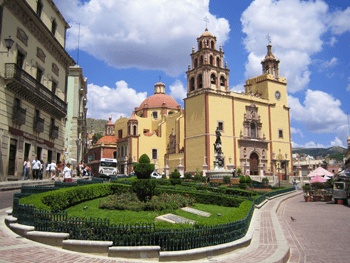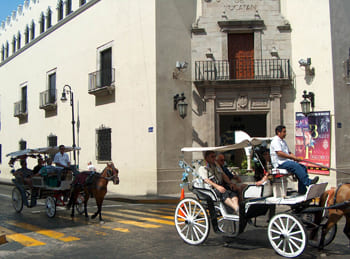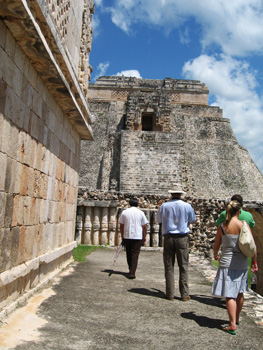During recent travels throughout Central & Southern Mexico, I had the chance to visit the capital city of Yucatan, Merida, with which I was very impressed. Located just off the coast of the Gulf of Mexico and home to almost a million people, Merida makes the perfect launching point for excursions to many of the ancient Mayan archeological sites in the area. As impressed as I was with Merida, however, I was even more impressed with the level of privacy, tranquility, and luxury offered at a local hacienda located just minutes from the hustle and bustle of the capital.
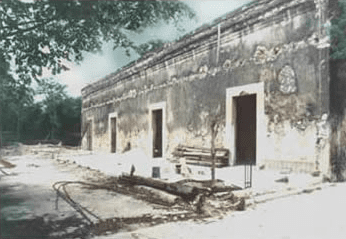
Hacienda Xcanatun in Ruins
Hacienda Xcanatun was originally constructed in the 18th century to cultivate corn and raise livestock but eventually began growing and processing sisal, which is strong fiber from a type of agave plant that was used to make the twine and rope that brought the Yucatan unprecedented amounts of wealth towards the end of the 18th century. Unfortunately, the introduction of synthetic replacements for sisal left Hacienda Xcanatun and most other haciendas in the Yucatan in a decline to ruins. In 1995, however, experts in Colonial and Mayan architecture worked together to rebuild Hacienda Xcanatun into the remarkable property it is today.
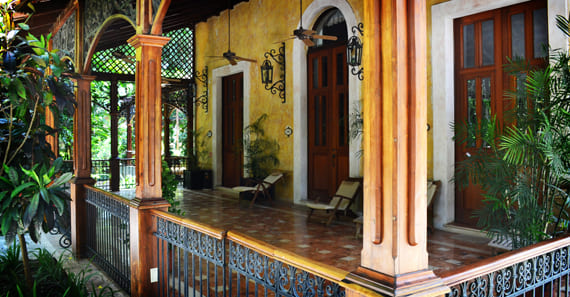
Suite Patio
Entering the hacienda is like entering another world altogether. I had a hard time comprehending how we could be just minutes from downtown Merida yet hear nothing but the birds and fountains of the property. The staff of Hacienda Xcanatun gave us a wonderful tour of their many levels of suits and rooms, which were all truly impressive. It is obvious that the owners took great care and paid great attention to even the most minute of details in each room. One suite has a wrought iron spiral staircase inside leading to a second bedroom and others have jacuzzis made of stone in the bathrooms!
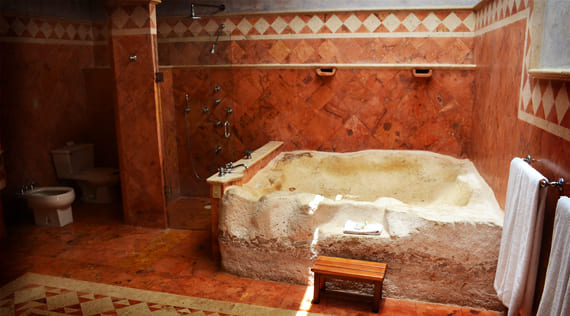
Suite Bathroom
After our tour of the property, we were treated to a special five-course lunch at Casa de Piedra, Xcanatun’s restaurant, as guests of owners Jorge Ruz and Cristina Baker who, in turn, requested that chef José Vázquez (one of the most skilled chefs in Mexico) host them in their absence. Casa de Piedra was selected as one of the top 50 restaurants in Mexico by the American Academy of Hospitality Sciences based in New York City, and has been the recipient of the Academy’s Star-Diamond award for excellence over the past eight years. After looking at the photos below, it’s needless to say that the meal was spectacular! In addition to the savory food, the ambiance of the room was both elegant and comfortable, and we were treated to live music as a local pianist who played wonderfully as we dined.
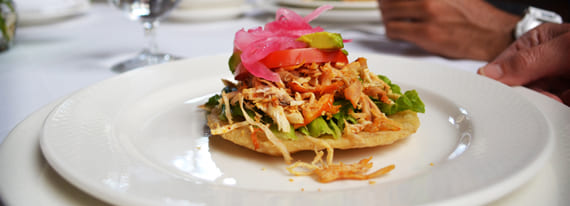
Gourmet Tostada
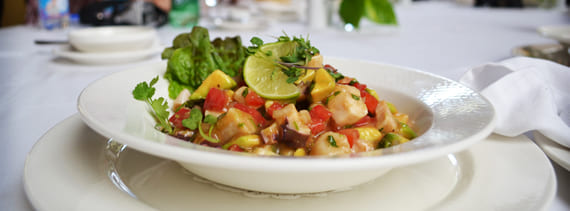
Seafood Ceviche

Chocolate & Caramel Cake
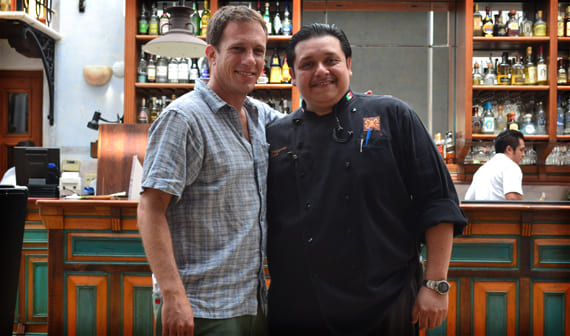
JM President Zachary Rabinor with chef Jose Vazquez
On behalf of Journey Mexico and our group of international travel experts who were on the trip, many thanks to the Hacienda Xcanatun for such a wonderful day! For more information about the Hacienda Xcanatun, please contact us at info@journeymexico.com.

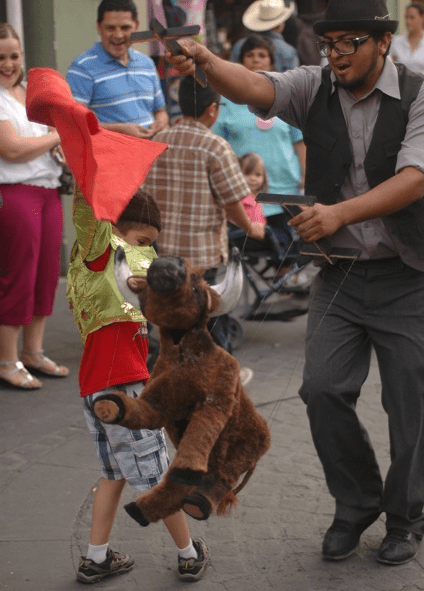 AGUASCALIENTES, MEXICO – “Hey bro where are you from? I’m from Chicago and I’m here with my wife and my buddy from college”. “I’m from Canada”, I replied to the sunburnt man dressed in a baseball cap, shorts, sneakers and an oversized t-shirt. His eyes gleamed with excitement as he confessed that I was only the second English speaker he had met in his three days at the San Marcos National Fair in the
AGUASCALIENTES, MEXICO – “Hey bro where are you from? I’m from Chicago and I’m here with my wife and my buddy from college”. “I’m from Canada”, I replied to the sunburnt man dressed in a baseball cap, shorts, sneakers and an oversized t-shirt. His eyes gleamed with excitement as he confessed that I was only the second English speaker he had met in his three days at the San Marcos National Fair in the 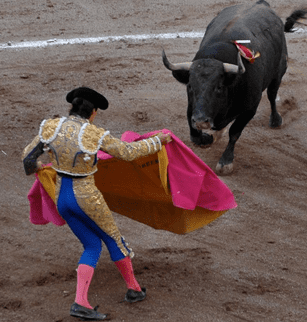 Some of the more popular attractions include the bullfights, cockfights, a casino, and of course – the parties. I skipped the cockfights and casino but decided to go to my first bullfight, in hopes of having a real cultural experience. With a seating capacity of 15,000 people and an incredible construction time of only 48 days, the arena was nothing short of impressive. Passionate screams of ‘Ole’ and continuous whistling could be heard as the animated matadors teased and evaded the infuriated bulls. Although I enjoyed the energetic atmosphere of the arena, I only stayed for a half-hour, as my stomach and conscience could no longer handle the very one-sided and bloody battles.
Some of the more popular attractions include the bullfights, cockfights, a casino, and of course – the parties. I skipped the cockfights and casino but decided to go to my first bullfight, in hopes of having a real cultural experience. With a seating capacity of 15,000 people and an incredible construction time of only 48 days, the arena was nothing short of impressive. Passionate screams of ‘Ole’ and continuous whistling could be heard as the animated matadors teased and evaded the infuriated bulls. Although I enjoyed the energetic atmosphere of the arena, I only stayed for a half-hour, as my stomach and conscience could no longer handle the very one-sided and bloody battles.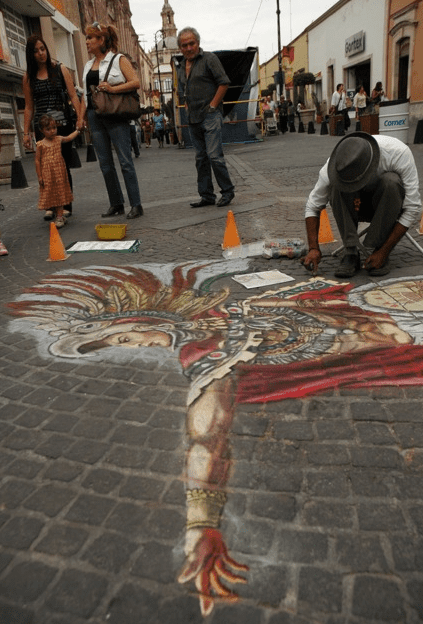 The organized events were spectacular but what I enjoyed more was the abundance of talented artists and performers, who brought the city streets to life. I never had to stray far from my hostel door to find someone preforming magic tricks, dancing, playing a musical instrument or entertaining crowds of onlookers with their own artistic talent. The owner of a small restaurant and 25-year resident of Aguascalientes explained why he loves the fair: “The fair brings families together. People who usually only come into town once a month come in several times – and they get all dressed up. The fair gives children more opportunity to spend quality time to with their fathers. I usually visit my family in other parts of Mexico, but when the fair comes, they make their way to little Aguascalientes.”
The organized events were spectacular but what I enjoyed more was the abundance of talented artists and performers, who brought the city streets to life. I never had to stray far from my hostel door to find someone preforming magic tricks, dancing, playing a musical instrument or entertaining crowds of onlookers with their own artistic talent. The owner of a small restaurant and 25-year resident of Aguascalientes explained why he loves the fair: “The fair brings families together. People who usually only come into town once a month come in several times – and they get all dressed up. The fair gives children more opportunity to spend quality time to with their fathers. I usually visit my family in other parts of Mexico, but when the fair comes, they make their way to little Aguascalientes.”